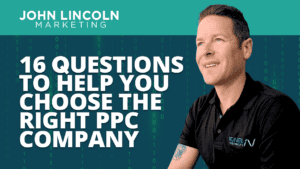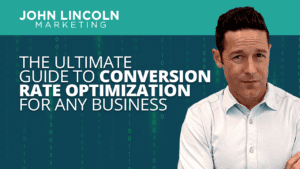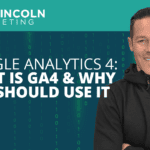
Top 16 Questions to Ask a PPC Company in 2024
In 2024, choosing the right PPC company is not just about spending your advertising budget. You want to make every cent count towards your business
At one time, you may have encountered an executive who spoke favorably about “The Flywheel Effect.”
But what exactly is Flywheel Marketing?
That’s the subject I’ll cover in today’s article.
I’ll explain the marketing flywheel: what it is and how you can use it. More importantly, I’ll share some real-world examples that apply to digital marketing.
It’s a concept that comes to us from the great Jim Collins. He wrote a must-read business book some time ago called Good to Great: Why Some Companies Make the Leap and Others Don’t.
One reason some companies “make the leap” is because they use the Flywheel Effect.
The Flywheel Effect happens when you score little wins for your business. But here’s the key: those quick wins build on each other.
After a while, all those stacked successes generate momentum for your brand.
And, before you know it, your business seemingly grows itself. The entire process is automated.
It’s called the Flywheel Effect because it’s the business process equivalent to the mechanical device it’s named after.
A flywheel is a heavy wheel attached to a rotating shaft that delivers power from a motor to a machine. The amount of energy it stores depends on how fast it spins, the amount of friction it encounters, and the size of the wheel.
The bottom line: it’s an efficient engine.
And your business can run like a well-oiled machine too if you build flywheels specific to your company.
Before I apply the principle to business strategy, let me apply it to another subject you’re interested in: winning customers.
At least that’s where Jim Collins went with it.
According to Collins, your customers are your best sales reps. So if they’re happy with your product, they’ll tell their friends about it.
Which leads to inbound marketing, the foundation for our first flywheel.
Breaking it down into three parts: attract, engage, and delight.
Speaking of easy, that is the overarching keyword for flywheel marketing.
The entire basis of the marketing flywheel rests on reducing impediments to marketing. That’s like reducing friction in a real flywheel.
So take a break right here and think about some barriers in your marketing process. Then ask yourself what you can do to eliminate them.
Think about what processes you could implement to make it easier for people in your target market to engage with your brand.
There are micro flywheels within your business as well. And I’ll cover some of them here.
Consider, for example, a financial flywheel. Use it to evaluate your finances weekly and ensure that they’re running as expected.
Or maybe an internal review flywheel? Create efficiencies even when it comes to bureaucratic hoops your team members must jump through.
Or how about a sales process flywheel? That can consist of several steps:
Make each step of that process as easy as possible and you’re on your way to flywheel euphoria.
Let’s dig deeper into a specific example of a flywheel that’s likely near and dear to your heart: the sales cycle flywheel.
This process involves using your CRM to convert contacts into happy customers who will tell two friends about your product. And then they’ll tell two friends. And so on.
In a B2B environment, you probably assign each contact one of five stages:
Now let’s further assume that this flywheel takes 60 days on average to take a person from Contact to Close.
What if you’re able to get that number down to 50 days? Or, even better, 30 days?
That’s an example of a flywheel that you’d automate within your own business.
The trick to getting it down from 60 days to 30 days is easier said than done, though. It involves streamlining processes and removing impediments to forward progress.
In other words, you’ll need to eliminate the friction in your flywheel.
One of the best ways to eliminate friction is with automation.
Marketing automation is all the rage these days. But you should use it not just because it’s trendy but because it can help get the flywheel going.
So how can you automate your business processes? Let’s examine some possibilities in the stages I mentioned in the previous section.
If the first step to reel in contacts involves information gathering, think about how you can automate that. One way is to create an online form that collects info for you.
Then there’s the process of creating a proposal. Can that be automated with online tools?
After that: proposal presentation. You can record a presentation and send it out to save yourself some time.
And, yes, you can even do contract automation once you’ve closed the deal. How about with the aid of e-signatures?
There are other ways you can use automation as well. One example: email automation.
Countless tools on the market today exist to automate your email outreach. Use one of them to grease that flywheel and get it spinning.
Keep in mind: you’ll never know if your flywheel is doing well unless you measure it. So make sure you establish quantifiable key performance indicators (KPIs) up front.
Usually, you’ll lean heavily on your reporting software to determine whether your flywheel is spinning as it should.
Just compare the stats that your tool gives you with your expectations and make the adjustments.
I hope you enjoyed this top-down look at Flywheel Marketing. More importantly, though, I hope you found it useful.
If you haven’t tried flywheel marketing yet in your business, why not get the wheel spinning today?
Welcome to John Lincoln’s personal website. You can learn about John Lincoln’s books, films, book him to speak and contact him. John is directly associated with many of the businesses mentioned on this website and freely discloses this information.

John Lincoln is CEO of Ignite Visibility, one of the top digital marketing agencies in the nation. Ignite Visibility is a 6x Inc. 5,000 company. Ignite Visibility offers a unique digital marketing program tied directly to ROI with a focus on using SEO, social media, paid media, CRO, email and PR to achieve results. Outside of Ignite Visibility, Lincoln is a frequent speaker and author of the books Advolution, Digital Influencer and The Forecaster Method. Lincoln is consistently named one of the top digital marketers in the industry and was the recipient of the coveted Search Engine Land “Search Marketer of The Year” award. Lincoln has taught digital marketing and Web Analytics at the University of California San Diego since 2010, has been named as one of San Diego’s most admired CEO’s and a top business leader under 40. Lincoln has also made “SEO: The Movie” and “Social Media Marketing: The Movie.” His business mission is to help others through digital marketing.
Want to get in touch with John Lincoln? Click Here To Reach Out.

In 2024, choosing the right PPC company is not just about spending your advertising budget. You want to make every cent count towards your business

Whether you’re a seasoned marketer or just starting out, conversion rate optimization (CRO) is a powerful tool that can boost your sales, leads, and overall

Feeling overwhelmed by the sea of SEO companies out there? You’re not alone! Choosing the right partner is crucial for achieving your online marketing
 Google Analytics 4: What is GA4 & Why You Should Use It
Google Analytics 4: What is GA4 & Why You Should Use It Google Analytics 4, or GA4, as you probably know by now, is the next generation of Google Analytics. If you’ve been